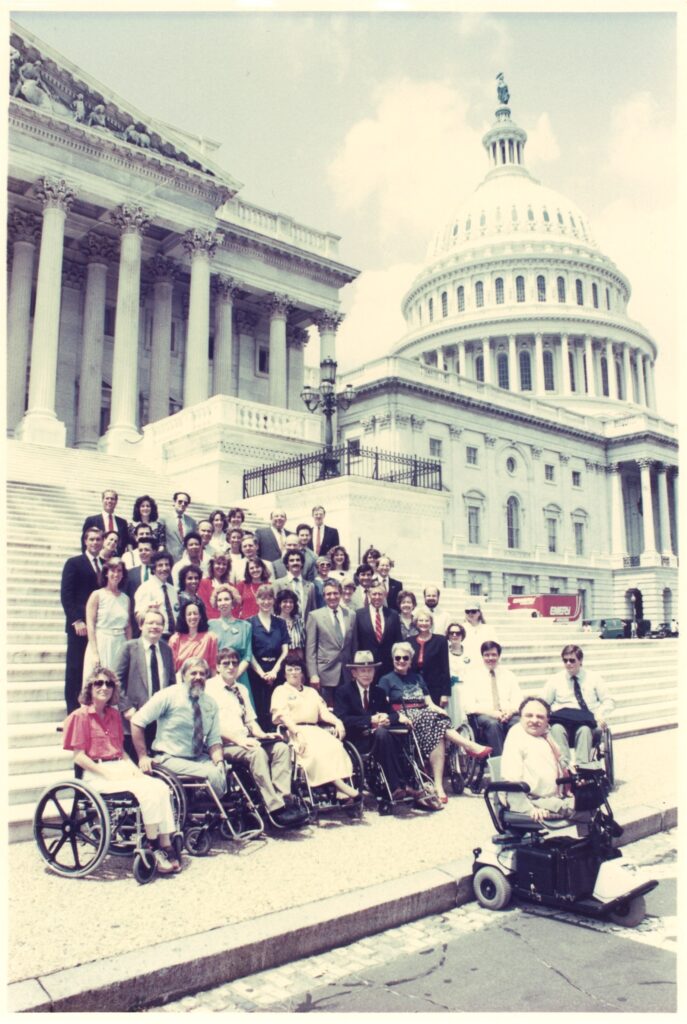 July 26, 2022, Gaithersburg, Maryland…
July 26, 2022, Gaithersburg, Maryland…
It was 90 degrees and sunny as over 3,000 people crowded the south lawn of the White House. People watched as President George Bush signed the Americans with Disabilities Act (ADA) into law. He was joined on stage by Evan Kemp, Chairman of the Equal Employment Opportunity Commission, Justin Dart, Chairman of the President’s Committee on Employment of People with Disabilities, Rev. Harold Wilke, and Sandra Swift Parrino, Chairperson, of the National Council on the Handicapped (now National Council on Disability).
I had the pleasure of being among the crowd of people and then, later in the day, joining Senator Harkin (D-IA, retired) for an appearance on CNN to explain the importance of the legislation and what we had just witnessed.
At the time I was Director of Project ACTION and Vice President of Advocacy for Easter Seals. I was a member of the “legal team” and lobbying “captain” for the disability community that helped craft the ADA. Later, I chaired the Urban Mass Transportation Administration’s (UMTA) ADA Federal Advisory Committee. The 26-member Committee advised UMTA (now the Federal Transit Administration) on developing its ADA regulations.
Looking back 32 years later, I’m not surprised that 100% of our nation’s fixed route buses are accessible. We were able to require that all new buses be accessible if purchased 30 days after enactment of the law. Since buses last on average 12 years, it was expected that we would have the most accessible public bus system in the world.
We also expected rail stations to be more accessible. Amtrak, the nation’s passenger railroad service that provides medium and long-distance inter-city rail service was given 20 years (by 2010) to make all stations in the intercity rail transportation system accessible. However, today, of the 387 stations where Amtrak has sole or shared ADA responsibility, 95 stations are fully compliant for all the elements Amtrak is responsible – roughly 25 percent of the stations.
In late April 2022, I had the honor of being nominated by President Biden as the first person with a disability to serve on the Amtrak Board of Directors. Although I still need to be confirmed by the U.S. Senate, I look forward to being a part of the team that will see the promise of the ADA fulfilled in making our nation’s rail service more accessible.
Read more about the history of the ADA and how United Spinal has used this landmark civil rights law to improve the quality of life and independence of all people living with mobility disabilities.
 David Capozzi
David Capozzi
Board Member, United Spinal Association

